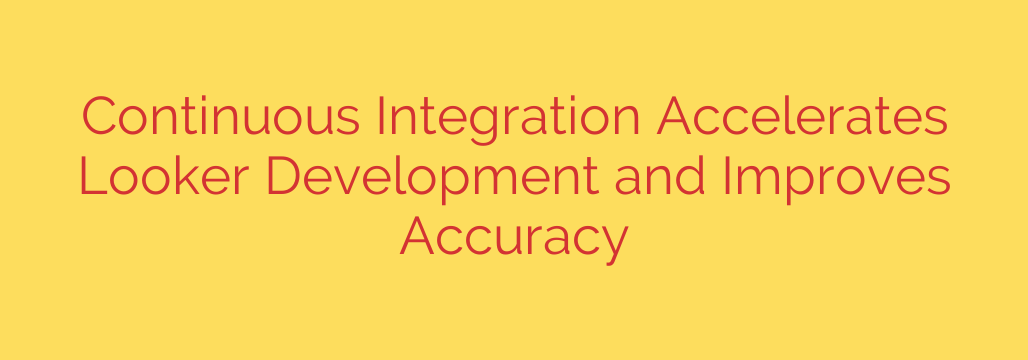
Implementing Continuous Integration (CI) is a transformative step for teams focused on Looker development. This practice significantly helps to accelerate the pace of creating and modifying LookML models while simultaneously working to improve accuracy and reliability.
Traditional manual processes for validating and deploying LookML changes can be slow and prone to human error. By adopting a CI pipeline, development teams can automate crucial steps. This typically involves integrating their LookML code changes with a version control system like Git. Every code commit can trigger an automated process.
This automated flow includes essential checks such as running the LookML validator to catch syntax errors and potential issues early. More importantly, a robust CI setup allows for automated testing. This can involve data tests to ensure the logic produces expected results or SQL runner tests to verify the underlying database queries generated by LookML are correct and efficient.
The benefits are numerous. Developers receive rapid feedback on their changes, allowing them to identify and fix issues much faster than waiting for manual review or deployment to a production environment. This accelerates the development cycle, enabling teams to iterate quickly and deliver new insights to business users sooner.
Furthermore, CI inherently helps to improve accuracy. By catching errors and inconsistencies automatically through predefined tests, the risk of deploying faulty or inaccurate LookML is dramatically reduced. This leads to greater confidence in the data models and the reports built upon them.
Beyond speed and accuracy, Continuous Integration fosters better team collaboration. With automated checks and a clear process for integrating changes, conflicts are minimized, and the quality of the shared codebase remains high. It also streamlines the deployment process, making releases smoother and less risky.
Ultimately, integrating CI into the Looker development workflow aligns with agile methodology, promoting efficiency, quality, and faster time-to-value for data projects. It’s a vital practice for scaling Looker usage and ensuring data quality in dynamic environments.
Source: https://cloud.google.com/blog/products/business-intelligence/introducing-continuous-integration-for-looker/








